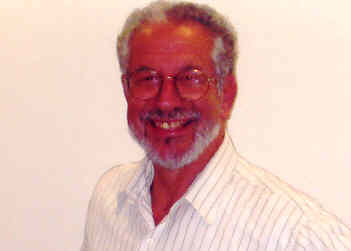By Ben Lynfield
Jaffa Jews and Arabs hold conflicting memories of the confrontation that lead to Israel's establishment. Despite flags everywhere and aerial acrobatics for Israel's 60th birthday, ghosts were still haunting Jaffa this week.
At Etzel House, a museum that commemorates the conquest of Jaffa in 1948 by Menachem Begin's underground fighters, also known as the Irgun, 82-year-old veteran Joseph Nachmias recalls how forces moved from house to house, hammering holes in the walls to enter. It was a turning point on the way to Israel's establishment and it removed the threat of Arab snipers who were shooting into Tel Aviv, he says. "We handed Jaffa to the new state on a platter of silver and blood," Mr. Nachmias insists. Mr Nachmias, who commanded 80 of the 600 Irgun troops, recalls how the future Israeli prime minister Mr Begin came out of hiding to address the fighters on the eve of the Jaffa battle. "It was the first time ever that Begin appeared in front of us. Many people fainted from excitement."
Mr Nachmias's fighters battled with snipers positioned at the top of the Hassan Bek mosque near Tel Aviv. During the battle, Arabs took flight amid heavy and, according to official British accounts, "indiscriminate" Irgun shelling over a wide area of Jaffa. After British forces withdrew at the close of the Palestine mandate, Irgun fighters entered Jaffa for a victory parade on May 14. Commanders had prepared buses and trucks in order to expel any remaining Arabs, Mr Nachmias recalls. Jaffa's pre-war population had been 80,000. After the fighting, 3,000 Arabs were left. "We were prepared to send them where their brothers went," Mr Nachmias says. "But Begin said, 'let them stay and live in peace with us.'"
Mr Nachmias says he regrets that decision. "Now the Arabs in Jaffa number 30,000 and we have a lot of problems with them but they are Israeli citizens and we can do nothing about it." Sami Abu Shehadi, whose grandfather was among the 3,000 who stayed, gives alternative tours to keep memories of pre-1948 Jaffa alive. Standing on David Raziel Street, named after an Irgun commander, Mr Abu Shehadi explains: "Before 1948 this was Iskander Awad Street. He was a Lebanese investor who built the first important modern streets in Jaffa." This area was the heart of Yafa," he continues, using the city's Arabic name. "Here was the British police station. In the market, you had people from Syria selling sweets and Egyptians selling cloth. "Over there were the offices of foreign companies that exported oranges, there were a few importers, a few banks, stores for expensive rugs and cloths and an office building for engineers, lawyers and doctors. Some of our mosques were destroyed in the fighting. One mosque is today a nice pub and restaurant."
He says a January 1948 bombing by the Lehi underground group was a main factor in spreading fear among Jaffa's Arabs. Mr Abu Shehadi took issue with authorities for hanging up flags in Arab parts of Jaffa. "They are raising the flag because they won the war but in this war there were victims," he says. " And these victims are my people."
